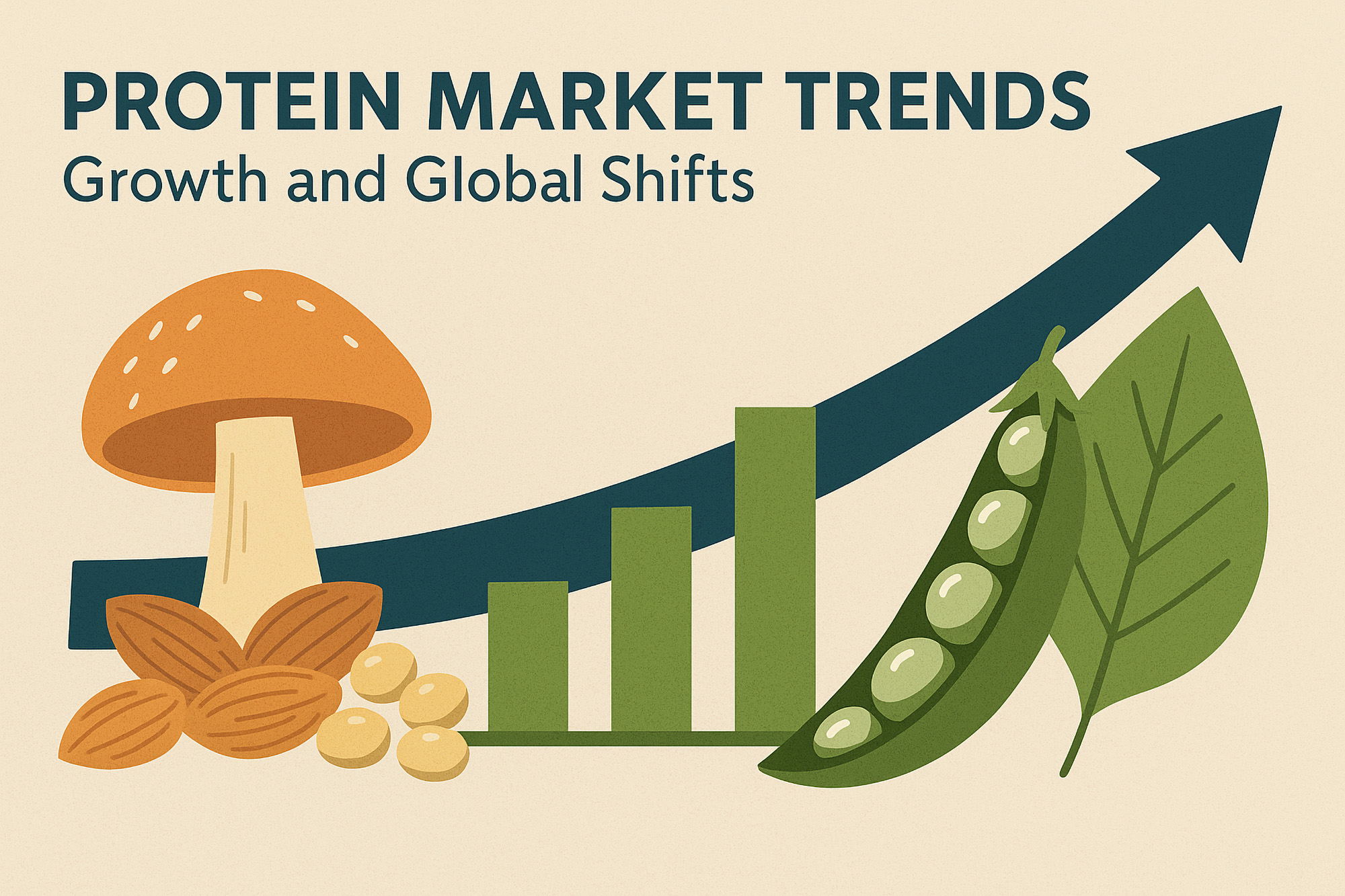

Protein market trends report highlights global shift toward plant-based eating
A new report from Innova Market Insights underscores how health, sustainability, and product innovation are transforming the global protein marketplace. The research, released July 21, takes a macro view of health priorities and narrows in on the expanding opportunities in alternative proteins for brands and suppliers.
The analysis covers product launches, positioning, and flavor trends across categories, showing how protein has become central to consumer decisions about food and drink. With nearly half of consumers identifying protein as the most important ingredient in their diet, the report suggests that the global food industry is entering a new era where protein quality, source, and functionality carry outsized weight.
According to the research, one in three consumers globally now rank health and wellbeing as a top spending priority beyond basic living essentials. Almost 40% said they had taken substantial steps in the past year to live more healthily, with 59% describing their approach as proactive rather than reactive.
The most common action people took to improve health was adopting a nutritious diet, cited by 45% of respondents. Other leading actions included regular exercise, attention to mental health, and weight management.
The study found clear momentum toward meat reduction. Nearly one in four consumers now identify as flexitarians or meat reducers, and one in five avoid meat entirely. Health is the primary driver, though many also cite dietary variety and environmental benefits.
Plant-based eating patterns continue to expand across global markets. “Protein has moved from a nutrient among many to a star ingredient,” the report notes. Consumers increasingly choose foods such as legumes, nuts, seeds, and mushrooms specifically for their protein content.
Global alternative protein launches have recorded a 10% compound annual growth rate between 2020 and 2024. While cultured and microbial proteins are emerging, with 15% CAGR in the same period, plant-based proteins remain dominant in terms of new products.
This expansion goes well beyond meat substitutes. Brands are now adding plant protein to chilled desserts, fish and seafood alternatives, and snacks. Harvest Moon, for example, has launched a tiramisu protein pudding using soy protein, while Dutch retailer Albert Heijn has introduced a pea protein–based salmon substitute under its Terra range. In the snack segment, Loka has released protein chips made with lupin flour and fava bean protein, offering fewer carbohydrates than conventional chips.
Bakery products, traditionally positioned as indulgences, are also being reformulated with higher protein content. Bake Me Healthy, for instance, uses upcycled sunflower protein flour in its vegan cookies, providing 8 grams of protein per pack.
Innova’s research highlights growing interest in new protein sources beyond soy, pea, and wheat. Fava beans, flaxseed, and lentils are emerging as versatile ingredients. Fava protein is increasingly being used to fortify meat and fish substitutes and raise the protein profile of dairy alternatives. Nush Protein, a yogurt alternative made with almond drink, incorporates fava bean protein to deliver up to 23g of protein per tub.
Mushroom-based proteins are also gaining traction, valued for their neutral taste, fibrous structure, and complete amino acid profile. Vienna-based Revo Foods uses mycoprotein to produce a 3D-extruded black cod substitute that mimics the look and feel of fish while offering high fiber and nutritional value.
Consumer demand for clean label products continues to shape the protein category. More than a quarter of consumers surveyed want fewer artificial ingredients in plant-based offerings, and brands are responding by simplifying formulations. Plant-based dairy brand Malk, for example, highlights its short ingredient lists, with soy Malk containing only water, soybeans, and salt.
Taste remains the leading area for improvement, with many consumers stating that flavor and texture are the biggest barriers to wider adoption of plant-based alternatives.
Hybrid products that blend animal and plant proteins are emerging as an accessible option for consumers not ready to adopt fully plant-based diets. At the same time, cell-cultivated meat and precision fermentation are gaining recognition for their sustainability potential. According to the report, 34% of consumers worldwide agree that cultivated meat is more sustainable than conventional meat.
In the dairy category, precision fermentation is helping replicate the taste and functionality of milk proteins while reducing environmental impact. Innova suggests that brands emphasizing natural appeal, simple ingredient lists, and innovative technologies will be best positioned to capture the next wave of demand.
Overall, the report paints a picture of protein as a cornerstone of modern nutrition and a focal point for innovation across food categories. With health-conscious consumers driving demand for variety, functionality, and sustainability, brands are being challenged to deliver products that combine taste, nutrition, and environmental responsibility.
The protein market, once dominated by animal products, is now diversifying rapidly. For companies across the food supply chain, the opportunities lie not only in responding to current demand but in shaping the future of how protein is produced, marketed, and consumed.
If you have any questions or would like to get in touch with us, please email info@futureofproteinproduction.com


-p-800.jpg)



